Farewell To A Category-Defining Sportbike: An R6 Retrospective

A look back at all things Yamaha R6 in the MO archives
With news of the Yamaha R6 going the way of the dodo bird, we thought it fitting to take a look back through the Motorcycle.com archives to see all the things we’ve written about Yamaha’s mighty little sportbike. Like the R6, Motorcycle.com has gone through a few changes since its inception in 1994, but fortunately for us, we’ve (barely) been around just long enough to see the R6’s journey. What follows is a trip through time with all the R6 stories that haven’t been lost during various server changes in MO’s history.
The Beginning
Introduced in 1999, the YZF-R6 is now of legal drinking age, and in that time, it has established itself as the supersport bike to have if you’re serious about racetrack performance. It’s unapologetically track-focused, whether you like it or not, and if you’re one of the many folks who have wrung the neck of an R6, then you can appreciate the thrill that comes with spinning an engine to 16,000 rpm.
The first R6 also has the distinction of being the first Yamaha MO ever crashed, too! Back when MO was young and irreverent, Aaron “Elmo” Hammel got the chance to give the new R6 a First Ride, and this is how it started:
Never mind the bollocks, we’ll get right to the point: The Yamaha YZF-R6 kicks ass. It is one of the most feral, thrilling, heart-pounding motorcycles we’ve ever ridden. Yeah, yeah, don’t many journalists use over-the-top superlatives in order to mollify manufacturers and help pay for the ad guy’s mortgage? Yes, it happens, but this time we really mean it. I remember coming out of the 165 mph front straight at Phillip Island as my heart pounded with a violent, lucid exhilaration bordering on an ecstatic clairvoyance that lasted until I low-sided into the gentle South Pacific mist…
At the time, the R6 was the most radical 600 available, both in terms of power and handling. Yamaha claimed it could make as much as 120 hp with the ram air, and with recent experience producing one of the best handling motorcycles of all time – the TZ250 two-stroke roadracer – it’s no surprise the R6’s chassis matched the powerful engine. This was a motorcycle that gave performance riders pause when it came to deciding between it or the slightly more powerful, but also slightly more cumbersome 750cc supersports of the time (remember those?)
Later, in the 1999 600cc Supersport Shootout, the new-kid-on-the-block R6 held its own against the likes of the Suzuki GSX-R600, Kawasaki ZX-6R, and the Honda CBR600F4. The story itself is a fun read, especially when you consider who we had testing the bikes. Joining the original MOrons Brent Plummer and Mark Hammond were the likes of AMA Pro Thunder champion Paul Harrell and a certain young hotshot kid named Roland Sands. Heard of him? Probably. But what you may not know is Roland is a former AMA 250cc Grand Prix champion.
Ultimately, the R6 tied for first place honors with the Honda, and it certainly wasn’t for its street manners – Yamaha was still making the YZF600 if you wanted a 600 for the street. From the start the R6 was track focused, and that’s what we liked about it.
The best part? In 1999, the R6 cost only $7,999. However, if you adjust for inflation that ends up being $12,500 in today’s money. So really, the price of an R6 hasn’t changed.
2001
The start of the new millennium also ushered in the age of updating supersports every two years, and some of that blame is because of the new, radical R6. Of course, the R6 itself got a series of minor changes for the model year 2001– and we got to ride it. It wasn’t a massive difference, considering how new the bike was to begin with, but there’s always the need to tweak and lighten things in the sportbike world, especially since Suzuki beefed up the GSX-R600 that same year to beat the Yamaha.
The interesting thing about these turn-of-the-century 600s is that their power output and weight isn’t so far different from their modern day counterparts. The real change came in terms of braking power, but especially in electronics.
With a new Suzuki, Yamaha, and Honda with the CBR600F4i, the 2001 World Supersport Shootout proved to be very interesting. Add to the mix Ducati’s 748S, and the entire test was filled with motorcycles people still lust for today.
In contrast to the 1999 test, the test this time around placed a greater weight on the street evaluation rather than the track portion. Despite the new parameters, the OG MO crew and its guest testers which, once again included Roland Sands, were pleasantly surprised by the R6’s street manners. So, the R6 still took top honors, narrowly beating out the new F4i and its fuel injection. The R6’s Deltabox chassis was good, but not great, compared to the competition, but it had a ripper of an engine and best-in-class brakes. This was the bike that stirred everyone’s emotions the most.
2003
While the 2001 model was a mid-model refresh, the 2003 R6 proved to be a critical update for Team Yamaha. This was the year the R6 became fuel injected. MO was there for a First Ride, and in fact, try as he might, the guy who was there back in 2003 is still a MOron now! It’s none other than John Burns himself. Here are a few things he had to say about it, in a way only John Burns can:
The R6 is still the quickest-reacting 600 we’ve ridden to date…
Don’t be thinking the engine hasn’t been completely gone through either…The big deal is application of the same “suction-piston” controlled fuel injection introduced last year on the R1. Controlled by a 16-bit processor acting upon advice from a throttle position sensor, an intake pressure sensor (no more balance hoses to fool with), and various others, the R6 system uses one latest-thing Nippon injector in each 38mm throttle body, pressurized by an in-the-tank pump to 41.2 psi. There’s a wax-filled fast-idle sensor, too, which means cold starts are easily accomplished automatically…
Anyway, the distinguishing feature of the Yamaha system is that it uses CV-carb-style vacuum diaphragms to regulate the rate of lift of the slides, which gives extremely smooth, linear power delivery.
And to sum it all up…
I remember when the FZR600 was new. Even then my reaction was, “Yick.” Even though it was pretty fast and all that, my what an unrefined crossbred homely little urchin that bike was. What a difference this past decade has made. Where the FZR’s frame appeared to have been forged in a dark gulag by malnourished slave laborers, this second-gen R6 is a piece of metallurgical sculpture. Every other component, not to mention the way the thing circulates a race track or scoots down the road, reinforces the feeling that it was worth it to hang around for the millennium.
And here’s another bit of 2003 R6 trivia: Managing Editor Evans Brasfield was so enamored with the 2003 R6, that he bought a press bike, which he held onto until last year when another press bike caught his eye, but MOrons already know that story.
2005
The 2005 version of the R6 is best remembered for introducing inverted forks and radial-mount brake calipers to the bike; and while that was a major change, MO’s Sean “Dirty” Alexander was one of the first to ride the bike on the street and reminds us that the 2005 has more than just a new fork and brake calipers. A 70-series front tire replaced the 60-series rubber, which helped solve some of the weird twitching at lean.
The engine, too, got a bunch of updates Yamaha claimed added three horses from the previous version. Sean then ducked away to put the R6 on the dyno – and wouldn’t you know it, Yamaha wasn’t lying.
Overall, Seany-poo came back raving about the various little changes culminating in one huge improvement to the R6. This general feeling continues on the racetrack, as Sean basically exudes confidence in the stock R6’s chassis all thanks to the 70-series front tire change giving him loads more stability in the front. How do we know this? Because we know Sean took pleasure in writing:
Even though I’m on stock D218 street tires, the new R6’s chassis and brakes allow me to out-brake several expert racers. Those outbraking maneuvers sometimes end with the bike off-line, but the nimble chassis allows me to keep the racers behind me, while I regain the proper line and establish a cushion.
When paired against the 2005 600cc supersport crop, the results were a bit…weird. More weight was given towards a bike’s street manners, though in every objective measure Kawasaki’s ZX-6R had the best numbers – at least in the hands of Dirty Alexander.
Oddly enough, the gang – minus one – agreed the R6 was most comfortable on the street saying, “The Yamaha is, to put it bluntly, the least painful to ride in the real world, and everyone agreed it was the best streetbike.” The one holdout? You guessed it. Mr. Sean Alexander.
On the dyno, the R6 was best of the “true” 600cc supersports, with its 105.09 hp, bested only by the 636cc Kawasaki ZX-6R’s 110.42 hp. A similar trend emerged at the dragstrip, where the ZX-6 bested the others with a 10.61-second run at 127.5 mph. Of the true 600s, the R6 was on top, covering the quarter-mile in 10.77 seconds at 123.4 mph.
At the racetrack, where these bikes call home, the gang would have been completely happy with any of the four bikes, as they are all so good. But since this is a story about the R6, here’s what the crew had to say about it:
We wouldn’t hesitate to own or race any one of these four machines and if well balanced performance is your thing, you shouldn’t either. If forced to choose from our personal experiences, we’d pick the Kawasaki ZX-6R as our expert Track Day / Club Racing weapon of choice, since it is the lightest and most powerful bike in this test. However, the Kawasaki can be a bit edgy and tends to wag its head a little more than we’d like, so if we were a new racer or slower track day guy, we’d skip the Kawasaki. If forced to stick with a “true” 600cc track bike, the Honda gets our nod, thanks to its best-in-class chassis. As for the R6 and GSX-R, we’d take the Suzuki over the Yamaha, based on its factory steering damper and overall competence at the racetrack. The R6 is slightly faster than the GSX-R, but like the Kawasaki, it shakes its head and can be a little demanding near the limit. These are just our impressions and as you probably noticed, different testers had different experiences with each of these bikes. As (sometimes) thinking men, we should probably declare this contest a 4-way tie for 1st place. However, as journalists we are expected to make a final decision, lest you decide to crucify MO.
Ultimately, when the lap times were averaged out, the R6 came home third.
2006
The year 2006 is pivotal in the R6 story, as it basically laid the foundation for the rest of the R6 lineage up to the present day. For the most part, a large chunk of the current R6’s bones, including the engine, can trace its DNA back to 2006. It’s a complete redesign over 2005, with a new engine, better suspension, and an all-out focus on the racetrack.
Able to crank out an honest 111 hp on the MO dyno back in the day, that’s still an impressive feat from a true 600cc engine. However, a big talking point with the engine was its 17,500 rpm redline – a preposterous claim that turned out to be a total lie anyway. Nonetheless, hitting 16,000 rpm is nothing to sneeze at. Here’s a clip from 2006 to give you a recap on the rest of the changes:
The motor is completely redesigned, with several firsts for Yamaha. The 16-valve, liquid cooled motor uses titanium valves and 67 mm pistons working in a 42.5 mm bore compressing fuel and air to a 12.8:1 mixture. The clutch and gearbox is all new as well, with a super-tall, 80 mph first gear and slipper clutch for maximum racetrack performance. Fuel injection (with digital engine management, of course) is controlled by an all-new fly-by-wire system for precise control. The result is 111 hp on our Dynojet Dyno at just under 14,500 rpm.
The chassis is also new, of course. The GP-inspired Deltabox frame and swingarm are much more rigid in all directions than the old frame, and it’s constructed of a combo of plates and castings to create what Yamaha calls a “straight connection layout.” The swingarm pivot is also moved 20 mm, and all the changes result in a 5 mm shorter wheelbase and sharper, steeper steering geometry. However, there’s still no steering damper.
The suspension is as serious as the rest of the bike. The 41 mm inverted forks have separate high and low-speed damping circuits, as does the rear shock. Since most sportriders don’t know enough to even set their spring sag, Yamaha’s message is clear: they are catering to very serious racers and trackday enthusiasts. Brakes are similarly serious, with radial-mounted, monoblock calipers grabbing 310 mm floating discs.
The whole package weighs in at 357 pounds dry, (claimed) just a couple of pounds lighter than last year’s model. However, those two pounds come at a steep price; the 2006 YZF-R6 rings up at an MSRP of $9,199, a cool grand more than the old bike. That might be immaterial; Yamaha is going to bring in a limited number of these bikes anyway. However, the old model will still be available as the YZF-R6S, with standard forks and brakes (instead of the inverted forks and radial-mount calipers on the 2005) for just $8,199.
Of course, we know from hindsight that the limited numbers claim isn’t exactly true. Nonetheless, considering how important this model year is, it’s a little embarrassing to say MO’s First Ride review of the bike might have been lost to the gremlins of internet server transfers – because I couldn’t find it.
That’s okay, because we still have the 2006 Middleweight Supersport Shootout to look at. So all is not lost. This test is particularly interesting because not only are all four Japanese supersports represented, but the Triumph Daytona 675 was thrown in the mix, too. With one less cylinder than the rest, 76 more cubic centimeters of displacement, and a British passport, it would throw a nice twist to the proceedings.
In the end the R6 tied for second place with the ZX-6R, with the Triumph, well, Triumphing. As if there was any doubt, the R6 reminded everyone that it’s happiest when on a racetrack. The screamer of an engine got everyone’s jollies off, but the catch was this power coming on like a light switch. Sean described it as “almost two-stroke like with its distaste for low revs and an explosive upper-RPM hit.”
On the handling front, the R6 was described as “manic yet precise and effective when utilized correctly.” Through the years the chassis didn’t change that dramatically, so perhaps as time went on, we’ve simply learned to adapt to the R6’s riding style.
2008
All the talk and criticism about the R6 being gutless down low didn’t go unnoticed, and the 2008 mid-cycle refresh for the R6 aimed to address those issues. Former MO E-i-C Kevin Duke got to ride the bike at Laguna Seca for his First Ride Review, where he came back impressed with the R6’s changes. As usual, there is no one major change, but Yamaha employed “50 refinements to improve how it delivers power,” says Kevin. He goes on to say:
Working in conjunction with the bike’s existing YCC-T ride-by-wire throttle is another techie acronym we first saw in last year’s R1: YCC-I, which is a variable-length intake trumpet stack called Yamaha Chip Controlled Intake. At lower revs, the intake air is fed with the fuel-injection’s velocity stacks in their long configuration for enhanced torque output. But the system electronically converts to a short intake tract at 13,700 rpm for optimum performance at the top-end.
To achieve this augmented powerband, Yamaha engineers made several other modifications to the 599cc powerplant in addition to the YCC-I. A bump in compression from 12.8:1 to 13.1:1 aids torque production, as do 83% larger crossover pipes in the exhaust headers. Cam timing was subtly altered to augment the new engine tuning. Meanwhile, several tweaks to reduce internal friction free up more ponies in the upper range, and wider connecting-rod bearings increase durability. The MotoGP-inspired snub-nosed exhaust retains its titanium construction and powerband-enhancing EXUP valve.
Obviously, model refreshes don’t just focus on a single aspect of the motorcycle; they tweak the whole thing. The 2008 R6 was no different. The frame was tweaked for more flexibility while the swingarm was bolstered for less flex, and a series of suspension changes round out the package. With a quote like, “It performed so well that I couldn’t imagine a change that would improve it…” it’s clear how Kevin felt about the bike…
…which makes this a really awkward transition because the updated Yamaha did so poorly in our 2008 Supersport Shootout, coming in a solid fifth place. Or in other words – dead last. Admittedly, there was some stiff competition that year with the GSX-R600, ZX-6R, CBR600RR, and Daytona 675 – all of which could still hold their own in 2021 – but it’s worth taking a closer look at why the R6 brought up the back of the pack in this test. Basically, MO testers back then, kinda like your esteemed MO testers today, were a bunch of softies. Here’s their conclusion:
We don’t imagine it’s all that often that a revised bike finishes a distant last place in a shootout held in the same year of the revision. Yet, the R6 managed to do just that. Combing over the notes and score sheets from each tester, it becomes obvious early that the Yamaha just didn’t do enough things right for us. There isn’t anything that doesn’t function correctly or is wholly unacceptable about this machine, but it also doesn’t sacrifice enough of its racing-edge performance to make it sensible for the prudent but demanding motorcycle enthusiast.
Initial turn-in requires more effort than the other four, the brakes lack sensitivity in an arena where the best binders require little more than a hot breath, and its ergos aren’t forgiving enough for the rider who needs to get on and off the saddle more often than just between races. Moreover, its engine, though maybe the most thrilling to hear and feel at peak horsepower, creates a bike that’s too focused on the podium rather than being focused on its owner’s well-rounded enjoyment on public roads.
Steve “Speed” Kelly says it plainly: “For this one, I would say that only racers need apply.”
2009
By now, we’re in the thick of the sportbike refresh cycles for all the manufacturers, hence another Supersport Shootout just a year after our last one. Once again, we took the 600cc competitors (minus the Triumph Daytona 675) both on the street and the track to shake them out. However, there were some notable changes worth mentioning this year.
First off, was an updated Kawasaki ZX-6R with a more potent engine and a “nastier appearance,” says our ‘ol pal Pete Brissette. But the bigger surprise for this year was the mysterious disappearance of horsepower among some of the bikes, including the R6. Nowadays we’re all too familiar with box stock sportbikes being choked via electronic secondary butterflies in order to meet US sound regulations. Well, we can start to trace those beginnings at least back to 2009. Where, just a year prior, we’d expect the 600cc crop to pump out well over 100 horses to the wheel, now the Honda CBR600RR and R6 struggled to reach the century mark (in stock form). A look at the dyno graphs showed obvious dropoffs in the upper reaches of the rev range that didn’t appear before – an obvious sign of closed butterflies.
As we know, dynos are only a small part of the whole story, and as far as the R6 goes, Yamaha continued to remedy the weak mid-range of the R6 by revising some YCC-T settings (that’s ride-by-wire in layman’s terms). Our testers agreed the Yammie pulled better in the middle than before but runs out of breath not long after and pales in comparison to the other 600s in the middle.
Otherwise, it’s the same old story for the R6 – racy ergos, a sharp chassis, “meh” brakes, and good looks. We know now that the aftermarket has more than made up for the R6’s major (power) downfalls, but in stock form, all of the compromises made to the engine – combined with significant updates to the other contenders that year – resulted in last place finishes for the R6 both on the street and at the track.
2011
In one of the first shootouts penned by Yours Truly, the 2011 Supersport Track Shootout put all four Japanese contenders together yet again. This time, Suzuki came to the party with an all-new GSX-R600. Without much new to the party other than BNG – Bold New Graphics – you can probably guess how the Yamaha did, both on track and during the Street Shootout. It’s starting to become a broken record at this point, with its lack of mid-range and track-focused demeanor getting in the way of practical streetability. Couple that with the compromises needed to make the R6 legal to sell in this country and you have a machine that’s also hampered in the one area it’s so focused on dominating – the track.
“There is much to like about the R6, most notably its racy feel, stellar appearance and laudable racing history,” says Kevin. “It’s held back only by a relatively weak street engine and mediocre brakes.” Obviously, as said before, we know the R6’s track shortcomings are more than made up for by the aftermarket.
2017
Little did anybody know at the time, but 2017 would mark the beginning of the end for the R6, as this would be the last major overhaul of the bike. In my First Ride Review of the 2017 R6, I finally have a chance to look back at the R6’s utter domination on the racetrack to put the bike into perspective. It also served as a good reminder of the R6’s original intent all the way back in 1999. The R6 has always been track first, and once tuners got the chance to override all the nannies that held it back in stock form, the bike proved its worth.
As time has marched on, however, the electronic age has well and truly entered the sportbike market, though primarily with the uber-powerful liter-class superbikes. The 2017 R6 ushered in some of the impressive rider aids first seen on the YZF-R1 into a supersport package. While they were at it, Yamaha overhauled the looks of the R6 to help it slip through the air a little easier. What about the engine, you ask? Well, that stayed the same. By now the 600cc supersport segment was well into its downward spiral, so an engine update really had no purpose. Looking back, it could be argued that this is one of the reasons the R6 is going away; without any updates to the engine, and thus no updates to its emissions systems, the R6 simply can’t meet the tightening Euro5 rules. And with the 600cc supersport market a shadow of what it once was, Yamaha had no reason to invest in it.
Maybe time softened my view of the R6, but having not ridden one in quite some time, I came away thoroughly entertained and impressed by the new bike. It’s still fun to let that little screamer of an engine wail, and its handling (at least on track), is sublime. Having the electronic safety net there adds to the peace of mind.
However, I’m going to have to eat crow for the last sentence of my review:
…if you’re looking at entering the supersport category and you want the sharpest tool available, you’d be hard-pressed to find something better than the new R6. It’s proof that, at least as far as Yamaha’s concerned, the 600 supersport class isn’t going anywhere.
Ryan Has The Last Word
I’ll admit I tend to hog the sportbike tests. Which hadn’t gone unnoticed by one Mr. Ryan Adams. Ryan, as it turns out, may be our resident dirt guy (not to be confused with dirtbag…), but he’s pretty well skilled on a streetbike, too. By virtue of being a MOron, he’s had access now to some sportbike schools, and so, we thought it fitting to have him give an entirely different take on two of the leading supersports in the category: The 2020 R6 and Kawasaki’s ZX-6R for this Novice Track Rider’s Perspective.
Reaffirming our belief that Ryan actually knows what he’s talking about, he noticed the same thing about both bikes as I did: The R6 is aggressive and track-focused while the Kawasaki is a better all-around package for the street and track (and it’s still fast).
Sayonara R6
And that brings to an end our look back at all things R6 related on MO. Or at least all the things I could dig up in the MO time machine. It’s been a good run, but alas, things change, time marches on, and eventually all good things come to an end. And if you’re reading this from Europe, technically the R6 isn’t coming to an end, as it’ll still be available for track use only (Yamaha USA couldn’t confirm the same was happening here). No matter, because if you really want an R6 the used market is flooded with them anyway.
Here’s to whatever Yamaha has up its sleeve next for the future of middleweight sport riding, and until then, thanks for the memories.

Troy's been riding motorcycles and writing about them since 2006, getting his start at Rider Magazine. From there, he moved to Sport Rider Magazine before finally landing at Motorcycle.com in 2011. A lifelong gearhead who didn't fully immerse himself in motorcycles until his teenage years, Troy's interests have always been in technology, performance, and going fast. Naturally, racing was the perfect avenue to combine all three. Troy has been racing nearly as long as he's been riding and has competed at the AMA national level. He's also won multiple club races throughout the country, culminating in a Utah Sport Bike Association championship in 2011. He has been invited as a guest instructor for the Yamaha Champions Riding School, and when he's not out riding, he's either wrenching on bikes or watching MotoGP.
More by Troy Siahaan



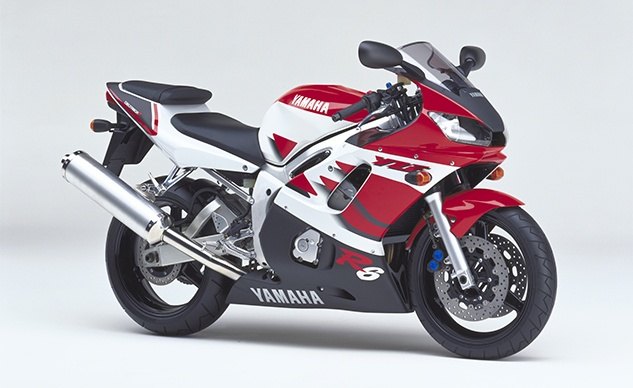

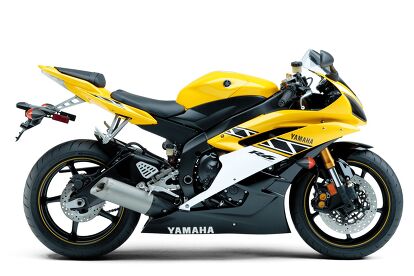
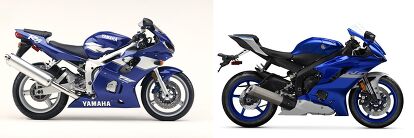






















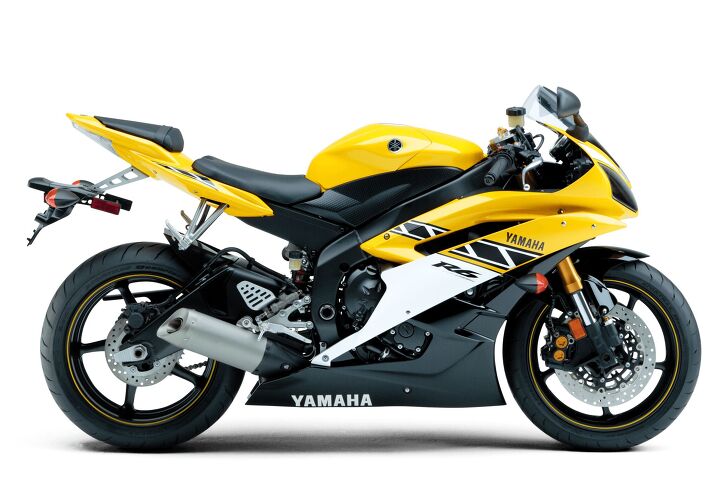

























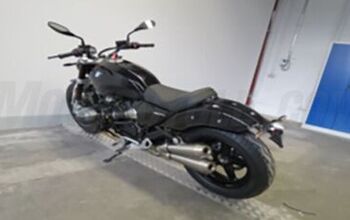




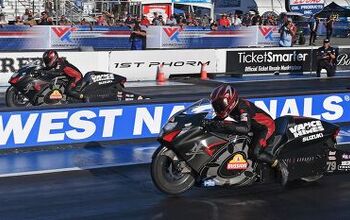




Comments
Join the conversation
Ah memory lane. I had a 2000. Put over 70k miles on it before the engine finally let go. Commuting, canyon blasting, track days, it did it all. It was a nervous bike, though. Cant imagine anyone having it as a first bike! And yes, it was a serious bike as mentioned here but what a solid machine at speed! The faster you went, the better it got.
These days? On a gentleman's express (Thruxton R). I don't think my old knees could manage much time on the pretzel rack that modern super sports are!
The king is dead. Long live the king!
One of my bikes is a 2008 Yamaha FZ6 which has an engine from the R6 with (I believe) different cams/timing to give more low down torque and a more comfortable seating position. It still flies and we have used it for touring and track days.
We still love it and it seems unbreakable.